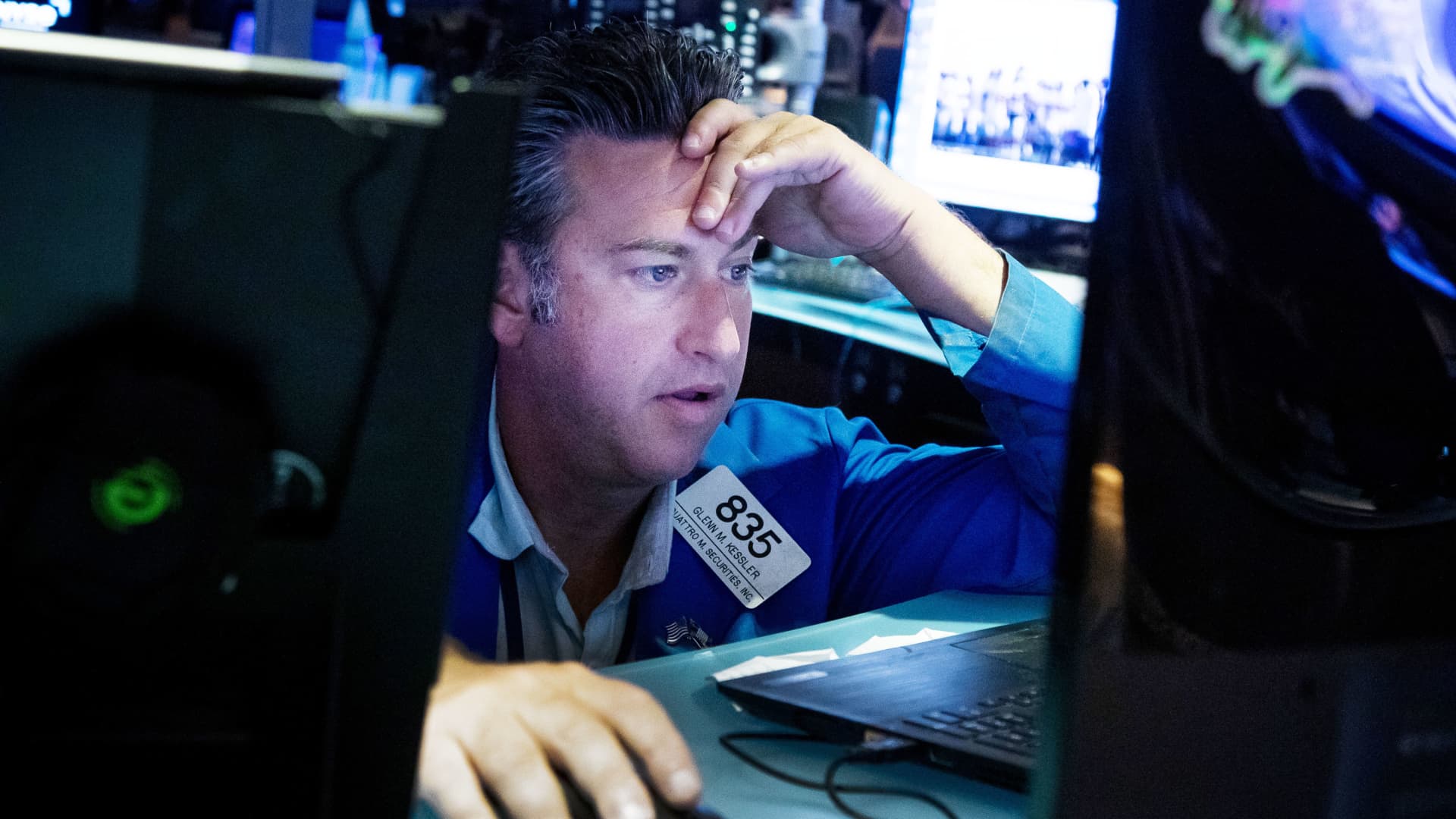Job growth was likely strong in July, but it could slow in coming months with more layoffs


Employers likely added fewer jobs in July, but the monthly employment report is still expected to show a robust pace of hiring that should edge lower in coming months.
Economists expect 258,000 jobs were added, down from 372,000 in June, according to Dow Jones. Unemployment is expected to hold at 3.6% and wages are expected to rise by 0.3%. The jobs report is released Friday at 8:30 a.m. ET.
“I think it should be a right down the strike zone kind of report ,” said Mark Zandi, chief economist of Moody’s Analytics. “You’ve got more layoffs, initial claims are up and you have fewer hires because unfilled positions have come down. … We were close to 400,000 [new jobs] last month, 500,000 the month before. The models say 225,000.”
The labor market is in a state of flux. Hiring is expected to slow as the Federal Reserve raises interest rates to cool inflation — and the economy. But companies are still looking to hire as they struggle with worker shortages.
That consideration and a shift by consumers to spend on services, such as travel rather than goods, means some industries are seeing strong growth while others are potentially on the decline. For instance, more jobs are expected in health care, leisure and entertainment but fewer in manufacturing. Construction jobs could show a loss.
“As long as you’re above 200,000, you’re still doing better than pre-pandemic and it’s still strong, “said Diane Swonk, chief economist at KPMG. “It doesn’t feel very good, because it’s being accompanied by inflation.”
Companies including Walmart, Amazon and Tesla have already planned layoffs, and economists expect to see more job losses from companies in construction, technology, retail and finance, among others.
As the Fed continues to raise interest rates, economists expect more and more steam to come out of the labor market. By the end of the year, some say the huge gains in monthly job growth could turn into actual declines. By then, the Fed’s target interest rate, at zero before its March rate hike, could stand at 3.25% to 3.5%, according to the central bank’s latest forecast.
Equal opportunity scourge
“At the moment, inflation is hurting everyone. It’s an equal opportunity scourge at this point,” said Michael Gapen, chief U.S. economist at Bank of America. “What policymakers are faced with is pushing the unemployment rate higher.”
Inflation continued to soar in June, with the consumer price index jumping 9.1%. But economists expect inflation has peaked, and job growth now seems to have as well.
“Somewhere in here, there’s going to be an inflection point,” said Gapen. “The trend in unemployment claims suggests that’s in front of us. Jobless claims have been moving higher since April, but they’re still super low by historical trends.”
Weekly unemployment claims rose by 6,000 to 260,000 for the week ended July 30, near the highest level since last November.
Gapen expects by that by year-end job growth could turn negative, followed by the possibility of several monthly reports of job losses as high as 150,000. He expects a shallow recession to take hold by then.
Swonk said she also sees payrolls turning negative, with monthly job losses between 100,000 and 200,000.
Zandi said he is not currently expecting a recession, and thinks the central bank is trying to engineer a soft landing without big job losses. He said the payroll numbers could get to around zero.
“If the Fed could draw a line, the line they would draw is you go right up to negative numbers and you have unemployment notch higher. You take the steam out of any wage growth. You get it consistent with any productivity growth. That’s what they have in mind,” Zandi said.
Zandi said job growth in a healthy economy can be more like 100,000 than the huge monthly numbers that came as the economy rebuilt after the Covid-19 shutdowns. According to the Bureau of Labor Statistics, private sector payrolls have surpassed the number of workers in February 2020 by 140,000 employees.
Fed Chair Jerome Powell has pointed to the strong labor market as one reason he does not believe the economy is actually in a recession now, despite the back-to-back quarters of negative gross domestic product. Typically, two quarters of contraction could indicate a recession, along with other factors, such as rising unemployment but, for now the economy is seen as being in just a technical recession.
This employment report is one of two the Fed will see before it decides how much to raise interest rates at its September meeting. Some economists expect policymakers will slow down its rate hikes and raise by just a half percentage point instead of the three-quarter point hikes it made in both June and July.
Keying on wage growth
Markets will be keying on the strength of the number of workers added, and on wage growth, which is expected to slow slightly. Wages are expected to rise by 4.9% from the year-earlier period, slower than June’s 5.1% pace.
“Given the fact we’ve rallied pretty well into the number, there’s more opportunity for disappointment than there is for markets to be positively surprised,” said Sameer Samana, senior global market strategist at Wells Fargo Investment Institute. “If you do get positive information that the labor market is cooling down and cooling quickly that could spur an additional rally from here.”
Samana said if wages are hotter than expected investors would be disappointed. “That could trigger a little bit of a sell-off, because people are leaning toward this expectation that inflation is coming down and the Fed could pivot soon. That, to us, is misguided.”
Wells Fargo Investment Institute expects unemployment will tick up to 4.3% by the end of 2022. “It could be that much of that happens in the fourth quarter as a lot of the layoff announcements start to feed into the claims and employment data,” said Samana.
“You could see companies becoming much more hesitant to hire,” he said. Samana added that there could be some labor hoarding. “We’re hearing from companies that it’s so difficult to hire that they’ll hold on to employees through the recession.”
Gapen said if the job number is as expected or stronger, it would reinforce the hawkish stance of the Fed.
“What does that bring from the Fed? It brings more tightening,” said Gapen. “Stronger data right now means more Fed tightening. It’s not a world where the Fed is going to lean against a slowdown in the labor market. It actively wants that.”
This post has been syndicated from a third-party source. View the original article here.



